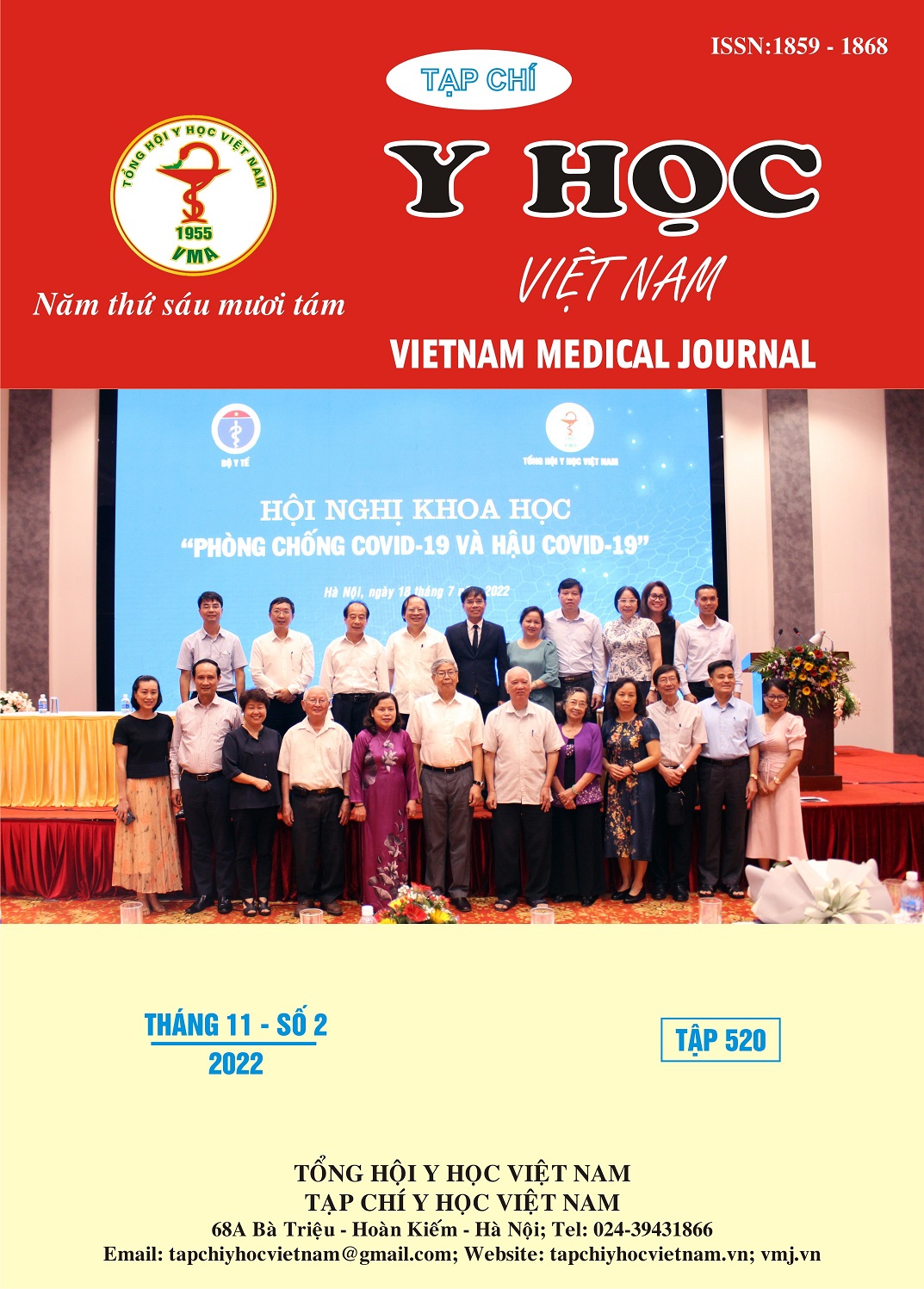EPIDEMIOLOGICAL ASPECTS OF EOSINOPHILIC MENINGITIS CAUSED BY ANGIOSTRONGYLUS CANTONENSIS AT THE CHILDREN’S HOSPITAL 1
Main Article Content
Abstract
Background: Eosinophilic meningitis caused by Angiostrongylus cantonensis in children is an increasingly concerned disease in the world as well as in Vietnam. Researches on eosinophilic meningitis caused by A. cantonensis in Vietnam are limited, especially in children.Objectives: The aim of this study was to describe epidemiological characteristics of children from 1 month to 16 years old who were diagnosed with eosinophilic meningitis caused by A. cantonensis and received treatment at the Department of Infectious Diseases at Children’s Hospital 1. Methods: Case series study. Results: From 1/2016 to 1/2020, there were 32 cases who were diagnosed with eosinophilic meningitis caused by A. cantonensis. 31 cases were identified in the cerebral spinal fluid by RT-PCR, 1 case was identified by positive serology. The ratio between males and females was 1:1. Most cases occurred in the rainy season, the highest incidence was in August (84.4%). The ages ranged from 13 months to 14 years and 5 months, the median age was 5.5 years. The majority of patients came from the Southwestern region, Ca Mau province accounted for the highest rate of disease. 6 cases exposed to the intermidiate host. The average incubation period was 22 days. 29 patients (90.6%) had symptomatic onset within 14 days prior to hospital admission. No patient was diagnosed eosinophilic meningitis caused by the nematode A. cantonensis before hospitalization. 8 cases were diagnosed central nervous system infection. Conclusions: Eosinophilic meningitis caused by A. cantonensis could be mistaken for other diseases. In endemic areas, the physician should suspect this disease when the patient has risk factors with acute or subacute progressive history.
Article Details
Keywords
meningitis, eosinophil, rat lungworm, Angiostrongylus cantonensis
References
2. Graeff-Teixeira C, da Silva ACA, Yoshimura K (2009). Update on eosinophilic meningoencephalitis and its clinical relevance. Clinical microbiology reviews, 22(2):322-348.
3. Hwang KP, Chen ER (1991). Clinical studies on angiostrongyliasis cantonensis among children in Taiwan. Southeast Asian J Trop Med Public Health, 22:194-199.
4. Sawanyawisuth K, Chindaprasirt J, Senthong V, et al. (2013). Clinical manifestations of Eosinophilic meningitis due to infection with Angiostrongylus cantonensis in children. Korean J Parasitol, 51(6):735-738.
5. Phạm Thị Hải Mến, Nguyễn Trần Chính, Lê Thị Xuân (2007). Viêm màng não do Angiostrongylus cantonensis tại bệnh viện Nhiệt Đới từ 2002 đền 2005. Tạp chí Y học Thành phố Hồ Chí Minh, 11(1):416-421.
6. Hồ Thị Hoài Thu, Trương Hữu Khanh, Hồ Đặng Trung Nghĩa (2017). Đặc điểm dịch tễ và lâm sàng ở trẻ viêm màng não tăng bạch cầu ái toan tại khoa Nhiễm bệnh viện Nhi Đồng 1. Tạp chí Y học Thành phố Hồ Chí Minh, 21(3):102-107
7. McBride A, Chau TTH, Hong NTT et al. (2017). Angiostrongylus cantonensis is an important cause of eosinophilic meningitis in Southern Vietnam. Clinical infectious diseases, 64(12):1784-1787


